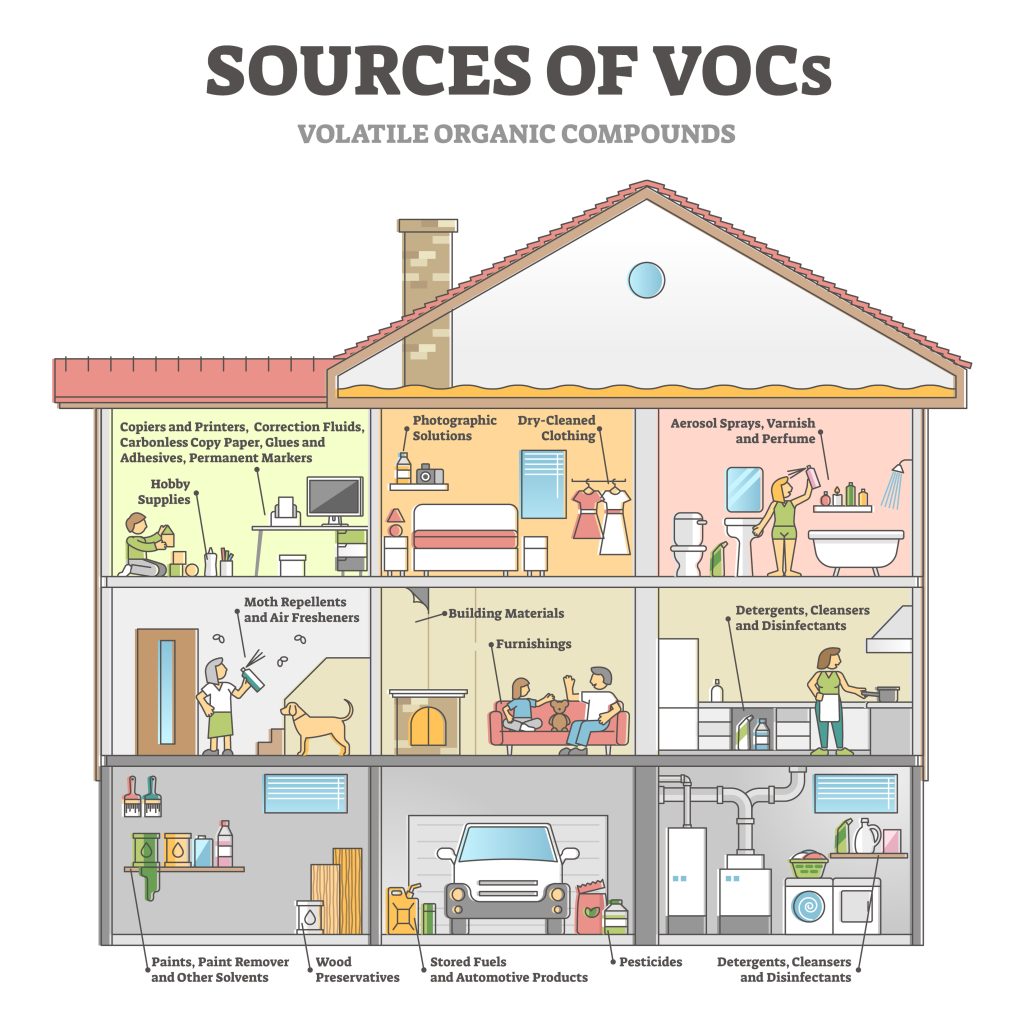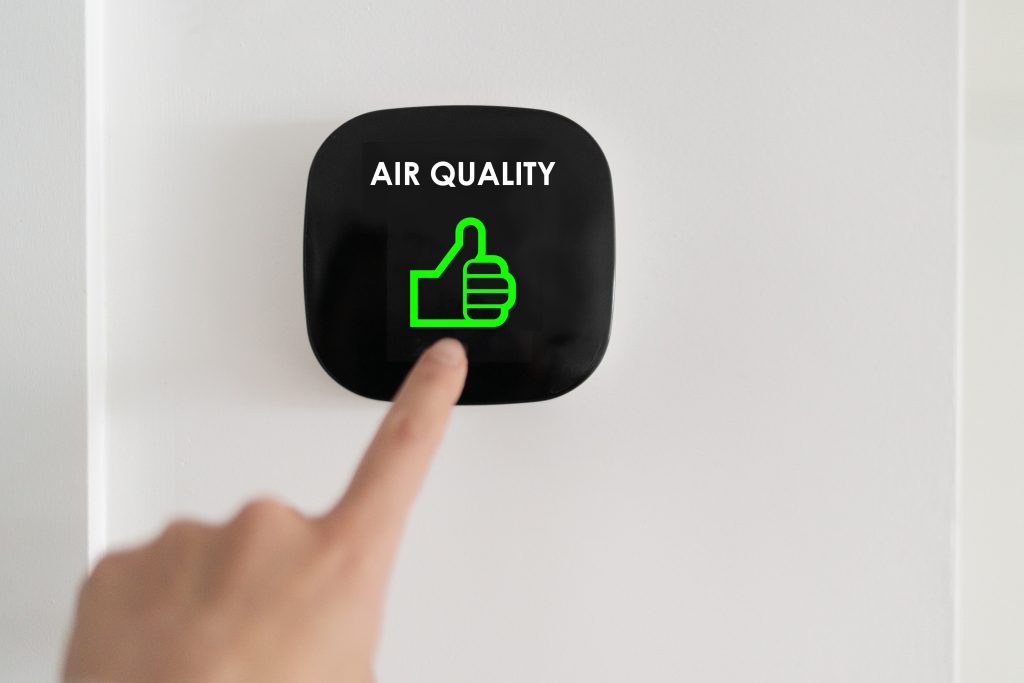What Causes Multiple Chemical Sensitivity – And How To Find Relief
Exactly what causes multiple chemical sensitivity differs from person to person, making it one of the most misunderstood conditions there is. Multiple Chemical Sensitivity (MCS) is a chronic medical condition where individuals experience symptoms from exposure to low levels of chemicals found in everyday products and the environment. This sensitivity often includes reactions to substances such as heavy metals, mold, cleaning products, fragrances, pesticides, pollution, formaldehyde, food additives, and even electromagnetic fields.1
MCS affects people of all ages, genders, and backgrounds. Symptoms of MCS vary widely from person to person but often include headaches, difficulty breathing or swallowing, nausea, anxiety, fatigue, and muscle or joint pain. These symptoms can range from mild to severe and may be triggered by even small amounts of the offending chemicals.2
In many respects, MCS is similar to fibromyalgia.
There is a lot of debate in the medical community about whether MCS is a legitimate diagnosis or not. However, I can attest to how real and debilitating MCS is, as I suffered through it myself. Even though people called me crazy, I knew what was going on wasn’t normal and definitely wasn’t exclusively psychological.
Through countless hours of study, I began to piece together the puzzle and encounter the cause of what was causing my suffering. Long story short, at the end of the rabbit hole, mercury toxicity that stemmed from my silver amalgam fillings, was the underlying reason for my MCS.
Read more about the toxicity of mercury fillings.
What Causes Multiple Chemical Sensitivity – Mercury Toxicity
Mercury is a toxic heavy metal that can cause various health issues, including multiple chemical sensitivity. When inhaled, mercury vapors are absorbed by the lungs and enter the bloodstream, leading to a wide range of symptoms and conditions. Ingestion of contaminated food or water can also lead to mercury poisoning.3
In addition to causing MCS, mercury pollution has been linked to various other health issues such as neurological disorders, developmental delays, and reproductive problems. This is because mercury interferes with the body’s biochemical processes, disrupting the normal functioning of cells and tissues.4 5
Read more about heavy metal toxicity.
In my case, I needed to remove mercury from my body and brain to put an end to MCS. Reducing mercury levels in the body is performed by chelation therapy. Chelation comes from the Greek word “chele” meaning claw, and refers to the process of binding heavy metals and toxins in the body so that they can be removed. Oral chelation involves taking a liquid or pill form of a chelating agent, which then binds to the mercury in the body and allows it to be excreted through the urine.6

What Causes Multiple Chemical Sensitivity – Systemic Inflammation And Cell Dysfunction
Both systemic inflammation and cell dysfunction play a significant role in MCS. In individuals with MCS, the inflammatory response to toxins becomes exaggerated and hypersensitive, leading to chronic inflammation throughout the body.
Cell dysfunction also contributes to the development of MCS. Our cells play a crucial role in regulating our body’s functions, and any disruption or dysfunction have far-reaching effects. In individuals with MCS, cells are unable to properly process and eliminate toxins, leading to an accumulation of chemicals and subsequent adverse reactions.7
What Causes Multiple Chemical Sensitivity – Mold Exposure
Molds are a type of fungi that can be found indoors and outdoors. They thrive in warm, damp environments and produce spores that are easily dispersed through the air. When individuals inhale these mold spores, their bodies may react negatively, triggering symptoms associated with MCS. This is because mold produces volatile organic compounds (VOCs) that can irritate the respiratory system and cause inflammation.8
In addition, exposure to mold can also weaken the immune system over time, making individuals more susceptible to developing MCS. Studies have shown that people who are exposed to high levels of toxic molds, such as Stachybotrys chartarum, are at a higher risk of developing MCS.9
Furthermore, mold exposure also leads to an increase in histamine levels in the body. Histamine is a chemical released by the immune system in response to allergens and toxins. In individuals with MCS, this increase in histamine can trigger symptoms such as headaches, dizziness, and fatigue.10
What Causes Multiple Chemical Sensitivity – Chemical Exposure
Chemical exposure is a major contributing factor to MCS because these substances are easily absorbed into our bodies through inhalation or skin contact. Our bodies have a natural defense mechanism to protect us from harmful substances, but repeated exposure to high levels of chemicals overwhelm this system and lead to MCS.11
What Causes Multiple Chemical Sensitivity – Genetics
In addition to environmental exposure, genetics play a role in the development of MCS. Studies have shown that some people are more susceptible to developing chemical sensitivities due to genetic variations that affect their body’s ability to detoxify and eliminate chemicals.12
What Causes Multiple Chemical Sensitivity – Formaldehyde, Carpets, And Plastics
Formaldehyde is a colorless gas with a pungent odor commonly found in building materials such as particle board, plywood, and adhesives. It is also used in the production of resins, plastics, and textiles. Exposure to formaldehyde occurs through inhalation, ingestion, or skin contact.
For individuals with MCS, exposure to even low levels of formaldehyde causes a range of symptoms including headaches, dizziness, fatigue, and respiratory problems. This is because formaldehyde is a known irritant and sensitizing agent that can trigger allergic reactions in some people.13
Carpets are another common trigger for MCS as they can contain a variety of chemicals, such as formaldehyde, flame retardants, and VOCs. These chemicals off-gas from carpets and contribute to indoor air pollution. Additionally, carpets can also harbor dust mites, mold, and other allergens that can worsen symptoms for those with MCS.14

What Causes Multiple Chemical Sensitivity – Electromagnetic Fields
Electromagnetic Fields (EMFs) are an invisible type of energy that is present almost everywhere in our environment. They are generated by both natural and man-made sources, including power lines, electronic devices, and wireless communication networks.
Although most people are not aware of it, we are constantly exposed to EMFs on a daily basis. However, for some individuals with MCS, this exposure can be a major trigger for their symptoms.
EMFs are known to disrupt the body’s natural electromagnetic balance, which in turn can affect various bodily functions and systems. This disruption is thought to be particularly problematic for those with MCS, as they already have a heightened sensitivity to certain environmental triggers.
Studies have shown that individuals with MCS are more likely to experience symptoms such as headaches, fatigue, and difficulty concentrating when exposed to EMFs. This is believed to be due to the fact that their bodies are already in a state of overload and any additional stress can result in a worsening of symptoms.15
Furthermore, some researchers suggest that exposure to EMFs may also contribute to the development of MCS in individuals who were previously not affected by it. This is because EMFs cause damage to cell membranes, which can make them more permeable and allow for the entry of harmful substances into the body.16 17
Dealing With Multiple Chemical Sensitivity – Create A Safe Environment
Creating a safe and non-toxic environment at home is crucial for those with MCS. This includes removing toxic products, eliminating harsh chemicals and fragrances from the home, and minimizing exposure to air pollution. Additionally, implementing proper ventilation in your home can help reduce indoor air pollutants.
Reducing Exposure To Air Pollution
Indoor air quality (IAQ) can greatly affect those with MCS. It is important to keep indoor air as clean and fresh as possible in order to reduce potential triggers and symptoms. Proper ventilation in the home can help reduce indoor air pollutants. This includes ensuring that vents and exhaust fans are working properly, using air purifiers, and allowing for fresh air circulation. It is also be helpful to open windows when possible and avoid using products that release harmful chemicals into the air.18
Many household products like cleaning products, personal care products, air fresheners, and laundry detergents contain toxic chemicals that can trigger MCS symptoms.19 It is important to read labels and avoid products that contain potential triggers. Consider switching to natural or fragrance-free alternatives.
While we have little control over outdoor air pollution, it is important to take precautions when spending time outdoors. This may include avoiding high traffic areas or the times of day when air pollution levels are at their highest.

What Causes Multiple Chemical Sensitivity – And How To Find Relief
Exactly what causes multiple chemical sensitivity is unique to each individual. However, mercury toxicity, pollution, cleaning supplies, pesticides, mold exposure, formaldehyde, VOCs, EMFs, and fragrances have all been linked to MCS. Targeting the root causes of MCS and staying away from them are crucial in finding relief.
Read more about Fibromyalgia.
References
1 Zucco GM, Doty RL. Multiple Chemical Sensitivity. Brain Sci. 2021 Dec 29;12(1):46. doi: 10.3390/brainsci12010046. PMID: 35053790; PMCID: PMC8773480.
2 Rossi S, Pitidis A. Multiple Chemical Sensitivity: Review of the State of the Art in Epidemiology, Diagnosis, and Future Perspectives. J Occup Environ Med. 2018 Feb;60(2):138-146. doi: 10.1097/JOM.0000000000001215. PMID: 29111991; PMCID: PMC5794238.
3 Pigatto PD, Minoia C, Ronchi A, Brambilla L, Ferrucci SM, Spadari F, Passoni M, Somalvico F, Bombeccari GP, Guzzi G. Allergological and toxicological aspects in a multiple chemical sensitivity cohort. Oxid Med Cell Longev. 2013;2013:356235. doi: 10.1155/2013/356235. Epub 2013 Dec 3. PMID: 24367721; PMCID: PMC3866722.
4 Pollard KM, Cauvi DM, Toomey CB, Hultman P, Kono DH. Mercury-induced inflammation and autoimmunity. Biochim Biophys Acta Gen Subj. 2019 Dec;1863(12):129299. doi: 10.1016/j.bbagen.2019.02.001. Epub 2019 Feb 10. PMID: 30742953; PMCID: PMC6689266.
5 Basu N, Bastiansz A, Dórea JG, Fujimura M, Horvat M, Shroff E, Weihe P, Zastenskaya I. Our evolved understanding of the human health risks of mercury. Ambio. 2023 May;52(5):877-896. doi: 10.1007/s13280-023-01831-6. Epub 2023 Feb 15. PMID: 36790578; PMCID: PMC10073381.
6 Sears ME. Chelation: harnessing and enhancing heavy metal detoxification–a review. ScientificWorldJournal. 2013 Apr 18;2013:219840. doi: 10.1155/2013/219840. PMID: 23690738; PMCID: PMC3654245.
7 Molot J, Sears M, Anisman H. Multiple chemical sensitivity: It’s time to catch up to the science. Neurosci Biobehav Rev. 2023 Aug;151:105227. doi: 10.1016/j.neubiorev.2023.105227. Epub 2023 May 10. PMID: 37172924.
8 Valtonen V. Clinical Diagnosis of the Dampness and Mold Hypersensitivity Syndrome: Review of the Literature and Suggested Diagnostic Criteria. Front Immunol. 2017 Aug 10;8:951. doi: 10.3389/fimmu.2017.00951. PMID: 28848553; PMCID: PMC5554125.
9 Caffrey AK, Lehmann MM, Zickovich JM, Espinosa V, Shepardson KM, Watschke CP, Hilmer KM, Thammahong A, Barker BM, Rivera A, Cramer RA, Obar JJ. IL-1α signaling is critical for leukocyte recruitment after pulmonary Aspergillus fumigatus challenge. PLoS Pathog. 2015 Jan 28;11(1):e1004625. doi: 10.1371/journal.ppat.1004625. PMID: 25629406; PMCID: PMC4309569.
10 Belpomme D, Campagnac C, Irigaray P. Reliable disease biomarkers characterizing and identifying electrohypersensitivity and multiple chemical sensitivity as two etiopathogenic aspects of a unique pathological disorder. Rev Environ Health. 2015;30(4):251-71. doi: 10.1515/reveh-2015-0027. PMID: 26613326.
11 National Research Council (US). Multiple Chemical Sensitivities: A Workshop. Washington (DC): National Academies Press (US); 1992. Introduction. Available from: https://www.ncbi.nlm.nih.gov/books/NBK234797/
12 Berg ND, Rasmussen HB, Linneberg A, Brasch-Andersen C, Fenger M, Dirksen A, Vesterhauge S, Werge T, Elberling J. Genetic susceptibility factors for multiple chemical sensitivity revisited. Int J Hyg Environ Health. 2010 Mar;213(2):131-9. doi: 10.1016/j.ijheh.2010.02.001. Epub 2010 Feb 24. PMID: 20185366.
13 Sorg BA, Swindell S, Tschirgi ML. Repeated low level formaldehyde exposure produces enhanced fear conditioning to odor in male, but not female, rats. Brain Res. 2004 May 15;1008(1):11-9. doi: 10.1016/j.brainres.2004.02.015. PMID: 15081377.
14 Steinemann A. National Prevalence and Effects of Multiple Chemical Sensitivities. J Occup Environ Med. 2018 Mar;60(3):e152-e156. doi: 10.1097/JOM.0000000000001272. PMID: 29329146; PMCID: PMC5865484.
15 Belpomme D, Irigaray P. Why electrohypersensitivity and related symptoms are caused by non-ionizing man-made electromagnetic fields: An overview and medical assessment. Environ Res. 2022 Sep;212(Pt A):113374. doi: 10.1016/j.envres.2022.113374. Epub 2022 May 7. PMID: 35537497.
16 Sun, Zc., Ge, Jl., Guo, B. et al. Extremely Low Frequency Electromagnetic Fields Facilitate Vesicle Endocytosis by Increasing Presynaptic Calcium Channel Expression at a Central Synapse. Sci Rep 6, 21774 (2016). https://doi.org/10.1038/srep21774
17 Pall ML. Electromagnetic fields act via activation of voltage-gated calcium channels to produce beneficial or adverse effects. J Cell Mol Med. 2013 Aug;17(8):958-65. doi: 10.1111/jcmm.12088. Epub 2013 Jun 26. PMID: 23802593; PMCID: PMC3780531.
18 Nordin S. Mechanisms underlying nontoxic indoor air health problems: A review. Int J Hyg Environ Health. 2020 May;226:113489. doi: 10.1016/j.ijheh.2020.113489. Epub 2020 Mar 9. PMID: 32163882.
19 Steinemann A. Fragranced consumer products: exposures and effects from emissions. Air Qual Atmos Health. 2016;9(8):861-866. doi: 10.1007/s11869-016-0442-z. Epub 2016 Oct 20. PMID: 27867426; PMCID: PMC5093181.




